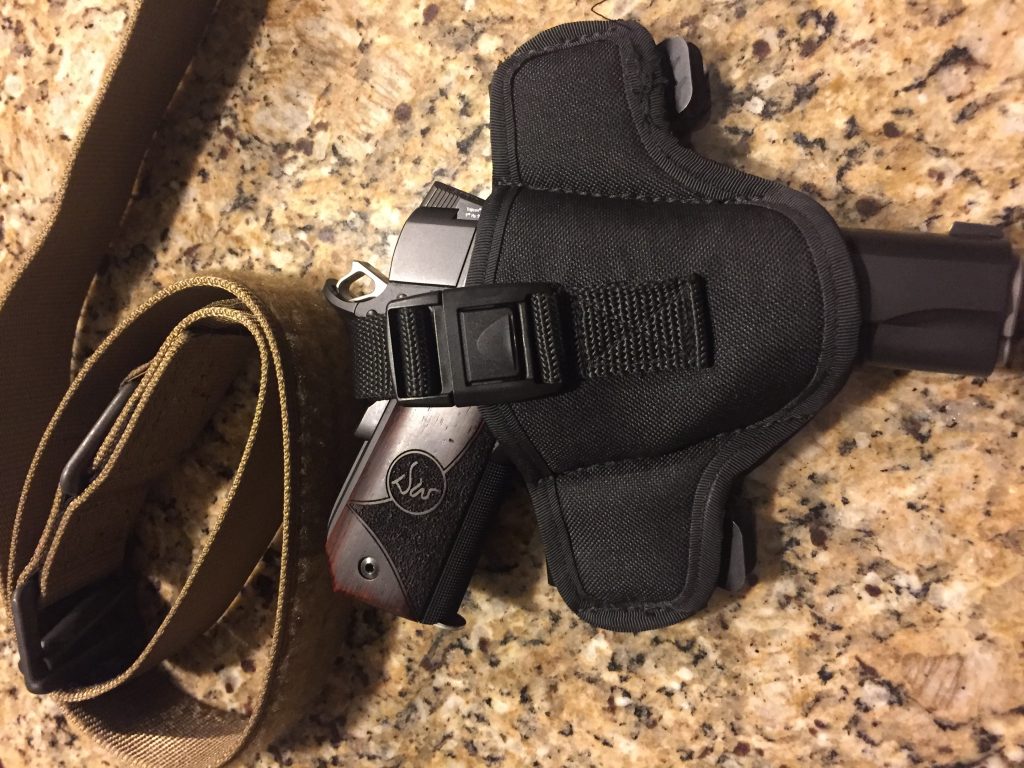OutdoorHub:
Back to the second portion my original point: What constitutes an effective defensive handgun? A firearm designed for self-defense (either military, law enforcement or civilian) needs to meet a minimum of four criteria to be considered effective:
- Function reliability even without lubrication or regular maintenance
- Able to consistently hit a 6-inch target within self-defense range (typically within 25 feet)
- Fire a round proven to reliably stop an attacker with reasonable shot placement
- Carry at least five rounds of ammo and be easily reloadable
The 1911 barely meets the first criteria. Not because the design isn’t capable – I’ve seen 1911s that rattle like an old toolbox that run like a scalded dog – but because its magazines can be a total crap shoot. The overwhelming majority of 1911s that suffer from reliability issues can be traced back to faulty magazines.
Shooters should stick with new-production magazines from companies with solid reputations like Chip McCormick Customs. These guys have been working on, running and building 1911 magazines for 3 decades. So I called the owner, Chip, and asked him about the importance of magazines.
“Magazines lie at the heart of (the M1911’s) reliability,” Chip explained. “Browning never intended 1911 magazines to be extended, or be run as hard as competitors tend to these days.”
[ … ]
Because the 1911 meets or exceeds all the aforementioned criteria, it’s not only a solid choice for serious self-defense use, but also on par with more modern designs, right?
Yes and no.
[ … ]
The 1911’s design could certainly benefit from higher magazine capacity, like something on par with the Springfield XDm in .45 ACP or the Glock 21 in the same caliber. Higher capacity frames like those from Infinity and STI exist, but are vastly more expensive than standard capacity 1911s. But it’s safe to say, as the 1911 continues to evolve, it’s far from obsolete.
No, the 1911 couldn’t benefit from a lot more rounds in the magazine if that means giving up the single stack design. And as for what Chip McCormick said, while I have been intending on purchasing some of his higher capacity magazines for the 1911 (I have not yet), the ones I have work just fine, and I have never had a FTF or FTE with my 1911. Not even once. I don’t know what they’re talking about.
I’ve said it before, but I like the grip angle (11 degrees), the slim single stack design (and resulting narrow frame profile), and the push of the .45 compared to the snap of the 9 mm. What’s works best for you is the best choice for you. What doesn’t is not. There is also an article at Cheaper Than Dirt entitled Every Man’s Defensive Caliber – The 9 mm.
The only legitimate point the author makes, in my opinion, is that the 9 mm is cheaper than the .45. True that. But you get what you pay for. The 9 mm isn’t every man’s defensive round if every man doesn’t like it and use it. I don’t use 9 mm. I use .45 because I like it. If you use 9 mm, do so because you like it and shoot it well, not because somebody said something on the internet about it.
These debates are stupid, and anyway, why would someone feel that it’s necessary to talk someone else into liking something he doesn’t use well? The only time this debate becomes important is for something like an entire department that issues a standard service weapon. I guess in this case if you don’t like what they issue, you need to practice with it until you do or find another job.
Finally, I wonder what it would have been like for John Basilone if he used had the 9 mm instead of the .45? I wonder if perchance we would have been able to win at Guadalcanal if John hadn’t lost the battle for Henderson Field? Oh, wait. Nevermind.





